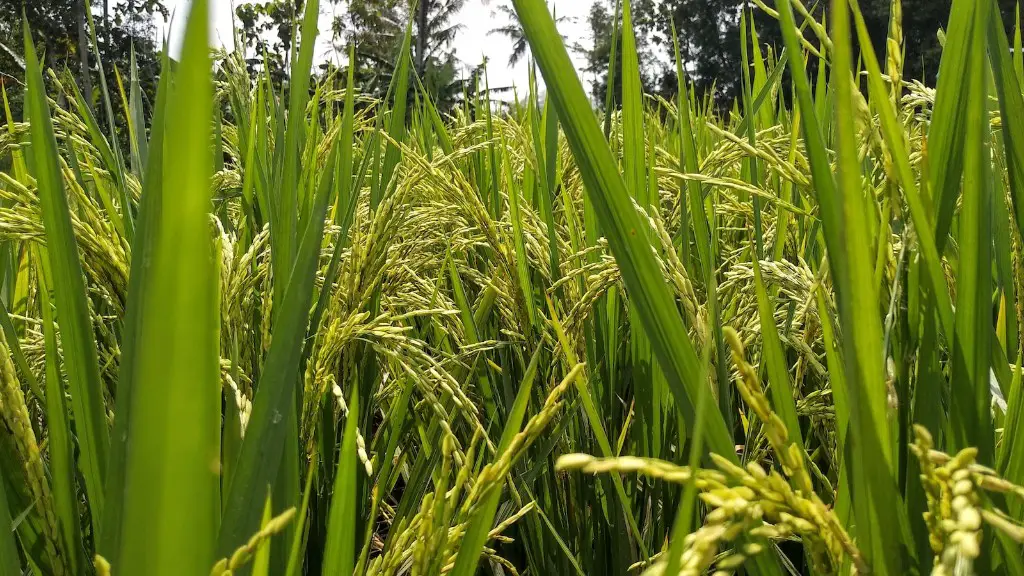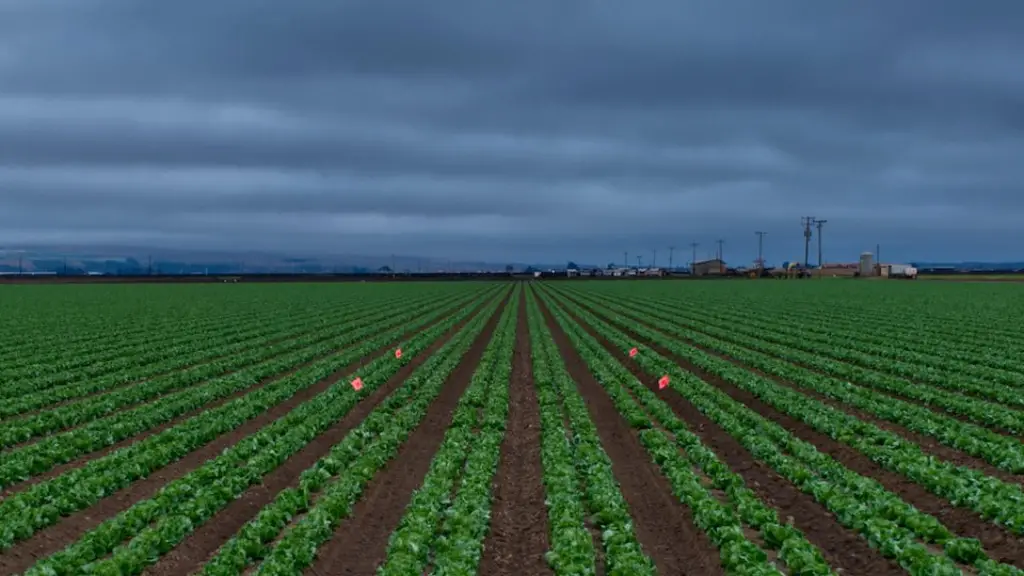Water management in agriculture is the process of controlling and conserving water resources for agricultural production. It includes the irrigation of crops, the drainage of excess water, and the prevention of soil erosion. Effective water management is critical to the success of agriculture and the health of the environment.
Water management in agriculture is the process of controlling the amount of water used in farming. This can be done through irrigation, drainage, and flood control.
What is water management?
Water resources management (WRM) is a process that involves planning, developing, and managing water resources, in terms of both water quantity and quality, across all water uses. This process includes the institutions, infrastructure, incentives, and information systems that support and guide water management. WRM is a complex and dynamic process that is constantly evolving in response to changing water demands, technological advances, and environmental conditions.
Groundwater recharge is the process by which water is added to an aquifer. This can be done naturally, for example when rainwater percolates down through the soil and into the aquifer, or artificially, through methods such as injecting water into the aquifer directly. Groundwater recharge is important in order to maintain groundwater levels and ensure that the aquifer can continue to provide water for people and ecosystems.
Which methods in agriculture can help with water management
1. Drip irrigation is one of the most efficient ways to deliver water to crops, minimizing evaporation loss.
2. Capturing and storing water can help to reduce irrigation requirements.
3. Scheduling irrigation properly can also save water.
4. Using compost and mulch can help to reduce evaporation and improve soil moisture retention.
5. Dry farming techniques can also be used to reduce irrigation requirements.
6. Cover crops can help to improve soil health and reduce water requirements.
7. Conservation tillage practices can also help to reduce irrigation water needs.
8. Crop rotation can also help to improve water use efficiency.
Water management is a critical issue for all businesses, but especially those in water-intensive industries. These industries must contend with a number of factors that can impact their water use, including regulatory compliance, aging infrastructure, economic growth, and sustainability and environmental stewardship.
Each of these factors must be carefully considered when planning for water management, as they can have a significant impact on water use. Regulatory compliance can be a major driver of water use, as businesses must adhere to strict regulations on water quality and quantity. Aging infrastructure can also impact water use, as older systems are often less efficient and can leak water. Economic growth can also lead to increased water use, as businesses expand their operations and require more water to support their growth. Finally, sustainability and environmental stewardship are increasingly important considerations when it comes to water management. Businesses must balance their need for water with the need to protect the environment, and this can often be a challenge.
careful consideration of all of these factors is essential for any business that relies on water. By taking into account the impact of each factor, businesses can develop a water management plan that meets their needs and protects the environment.
What is water management and why is it important?
Water management is important for a number of reasons. It helps to determine future irrigation expectations, ensure that water resources are used efficiently and sustainably, and protect against water shortages.
Water is a vital natural resource, and its availability is becoming increasingly scarce due to droughts and overuse. As a result, water management is crucial in order to ensure that this valuable commodity is used efficiently and sustainably.
There are a number of measures that can be taken in order to improve water management, such as developing policies and regulations to guide water use, investing in water conservation and efficiency measures, and increasing public awareness of the importance of water conservation.
It is important to ensure that the population has access to clean and sufficient drinking water, as well as to sanitation facilities. Additionally, it is important to improve and restore soil quality in order to increase productivity rates. Finally, it is necessary to reduce the impact of natural hazards, especially in the context of climate change.
What are the four ways of water management?
Water management is the process of managing water resources, including surface water, groundwater, and wastewater. It includes the planning, development, and operation of water resources infrastructure, such as dams, canals, and reservoirs. Water management also includes the management of water resources through policies, laws, and regulations.
Rainwater harvesting is a method of storing and collecting rainwater in reservoirs or natural tanks. This captures the rainwater that would otherwise be lost to evaporation and runoff. Groundwater harvesting is a method of saving water that is placed under the ground. This water is then used for irrigation, domestic use, or even for drinking water.
What are the steps involved in water management
Public water systems often use a series of water treatment steps that include coagulation, flocculation, sedimentation, filtration, and disinfection. These steps are important in order to ensure that the water is safe to drink.Coagulation and flocculation help to remove contaminants from the water. Sedimentation helps to remove any remaining particles. Filtration ensures that the water is free of any harmful bacteria. Disinfection ensures that the water is safe to drink.
The four extracted factors are institutional and legal factors, technical factor and farmers’ knowledge, economic factor and social factors. All of these factors play a role in the success or failure of a farming operation. A successful farming operation must have a good understanding of all of these factors and how they interact with each other.
How do farmers solve water problems?
Underground irrigation is becoming increasingly popular among farmers as a way to conserve water. Drip irrigation, in which water is delivered directly to the roots of plants through a system of emitters, is the most common type of underground irrigation. This method is highly efficient, using up to 50% less water than traditional surface methods. In addition, underground irrigation can help reduce erosion and runoff, and keep water from evaporating.
Water applied as irrigation allows for crop production in arid regions and supplements soil moisture in humid regions when growing season precipitation is insufficient. Irrigation has enhanced both the productivity and profitability of the agricultural sector. In India, the Indus River basin is the main source of irrigation water. The author has briefly explained how irrigation has contributed to the agriculture sector.
What are the three water management strategies
There are many ways to increase water supply, including developing new groundwater or surface water supplies, conserving water, reusing water, or expanding the use of existing supplies. Less conventional methods like weather modification, brush control, and tree trimming can also help increase water supply.
There are a number of things that we can do to help reduce pollution in our local water bodies. By using fertilizers wisely, applying pesticides judiciously, and using landscaping practices that prevent erosion, we can all help to keep our waterways clean. Additionally, it is important to wash our vehicles properly and dispose of pet waste and household chemicals responsibly. Finally, we should all take a moment to evaluate existing roads and plan future roads with care to minimize pollution.
How important is water management in organic agriculture?
Both organic and conventional farmers face the challenge of reducing water pollution from nutrients. Proper water management, combined with best nutrient management practices, can decrease nutrient leaching into groundwater and runoff into surface water.
Water is essential for all life and play a vital role in sustaining our environment. In NSW, rivers, creeks and wetlands provide important ecosystem services such as water filtration, flood mitigation and habitat for native plants and animals. A healthy river system is vital for the state’s economy and livelihoods, providing water for homes, farms, schools and businesses.
It is therefore essential that we protect and manage our river systems in a sustainable way. This means taking into account the needs of both the environment and human communities when making decisions about water use. It also requires a whole-of-government approach, with all agencies working together to ensure our river systems are healthy and productive.
Warp Up
Water management in agriculture is the process of using water efficiently to maintain or improve agricultural production. In many cases, water management in agriculture involves irrigation.
Water management in agriculture is a process of controlling and utilizing water resources in agricultural systems in order to maximize crop production and improve crop productivity. It includes the use of irrigation, drainage, and water conservation practices to optimize water use efficiency in agricultural production.





